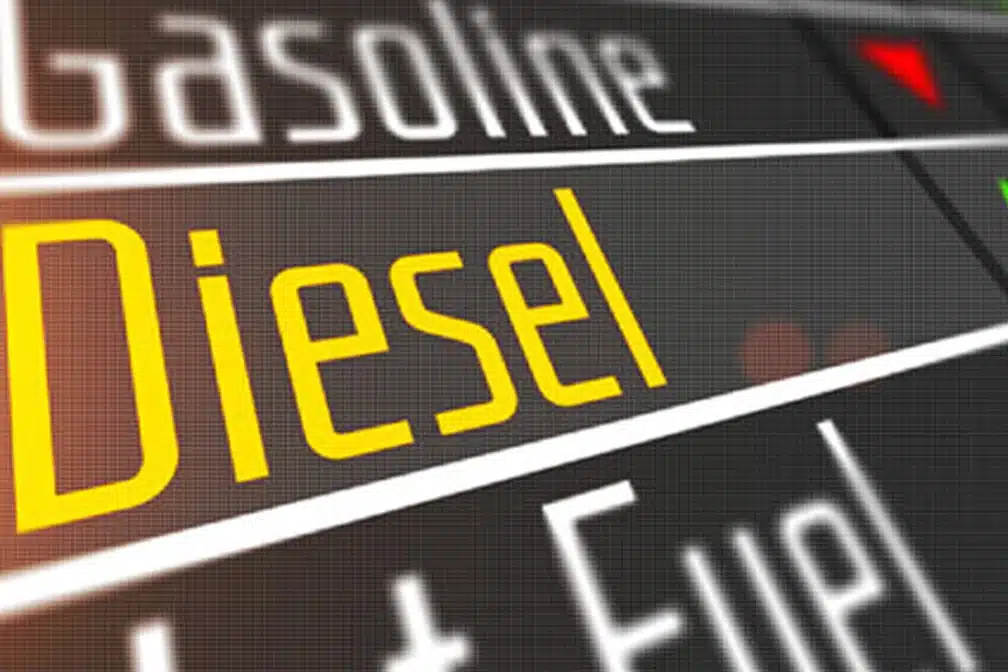In the vast and bustling landscape of the trucking industry, a segment often overlooked by the general public holds significant sway: private fleets. These fleets, which belong
More
May 9, 2024 6:16 am

In a not-so-welcome update for drivers across the United States, diesel prices have surged yet again over the past week, causing concerns for both consumers and industries heavily reliant on fuel. According to the recent report released by ProMiles.com on August 14, diesel prices experienced an overall increase of more than 10 cents across various regions. The national average reached an astonishing $4.245 per gallon, a spike of almost 11 cents compared to the previous week.
ProMiles.com, renowned for its comprehensive fuel reports, employs a methodology that differentiates itself from the federal Energy Information Administration (EIA). While the EIA surveys a limited sample of 400 truck stops and convenience stores, ProMiles draws data from thousands of truck stops, providing a broader perspective on fuel price trends. Additionally, ProMiles’s approach includes fueling stations across the nation, ensuring a comprehensive analysis.
The regional variations in diesel price increases were noticeable, ranging from 7.6 cents in the New England area to a staggering 16.8 cents in California. This trend was consistent across most regions, reflecting the complex interplay of factors influencing diesel prices, such as supply chain disruptions, geopolitical events, and global demand.
Among the significant regional increases, the Rocky Mountain and West Coast regions experienced an uptick of about 16 cents, indicating the broader impact of these changes across the western states. The East Coast region witnessed a moderate increase of just under 11 cents, which is relatively lower compared to other parts of the country. Notably, the Gulf Coast region emerged with the lowest average price per gallon, reporting a figure of $3.94.
However, when looking at AAA’s retail average U.S. price per gallon of diesel, the numbers were slightly different. On August 14, AAA reported an average price of $4.313 per gallon, surpassing the previous week’s $4.185. This discrepancy highlights the intricacies of tracking fuel prices accurately and emphasizes the importance of relying on multiple sources for comprehensive information.
Zooming out to a longer timeframe, the diesel price fluctuations become even more apparent. Just a month ago, diesel was priced at an average of $3.855 per gallon, indicating a sharp increase within this short span. A year-on-year comparison reveals a significant disparity, as diesel prices were recorded at $5.041 per gallon. Notably, the highest retail average U.S. diesel price on record was $5.816 per gallon in June 2022.
Contrasting the ProMiles.com and EIA reports, it’s evident that both sources agree on the overall trend of increasing diesel prices. The EIA report, released on the same day as ProMiles’s, revealed a decrease of 13.9 cents in the national price per gallon for diesel, settling at $4.378. Although this might seem contradictory, it’s crucial to note that the EIA’s figures are based on a different sampling strategy and methodology.
The EIA’s report also underscored the fact that every region saw a minimum 10-cent increase, amplifying the widespread nature of this surge. The most significant jump was noted in the California region, where prices soared by 17.9 cents. The Lower Atlantic and West Coast also faced substantial increases of 17.5 cents, while the West Coast, excluding California, also experienced an uptick of over 17 cents.
For consumers and businesses alike, the implications of these fluctuating diesel prices are far-reaching. As prices continue to rise, transportation costs can escalate, ultimately affecting the overall cost of goods and services. Moreover, industries heavily reliant on diesel, such as trucking and agriculture, could face challenges in budgeting and operational planning.
The recent surge in diesel prices across the United States, as reported by both ProMiles.com and the EIA, underscores the volatility of the fuel market. While the precise causes of these price increases can vary, it’s evident that factors like supply chain disruptions, global demand, and geopolitical events all play a significant role. As consumers and industries brace themselves for the impact of these changes, the need for comprehensive and accurate fuel price information becomes more important than ever.
In the vast and bustling landscape of the trucking industry, a segment often overlooked by the general public holds significant sway: private fleets. These fleets, which belong
MoreThe recent triumph of the United Auto Workers (UAW) in securing unprecedented contracts with the Big Three Detroit automakers—Ford, General Motors, and Stellantis (formerly Fiat Chrysler)—marks a
MoreThe negotiation standoff between UPS and the Teamsters union has brought both sides to the precipice of a strike, with the potential to disrupt the parcel market
MoreCDL Downgrade Warning: starting November 18, 2024, State Driver’s Licensing Agencies will revoke CDLs for drivers with unresolved violations. Act
MoreFirstElement has opened the world's largest Hydrogen Truck Fueling Station in Oakland, CA. It is the first commercial hydrogen fueling
MoreThe Ontario Provincial Police (OPP) has rolled out a new initiative requiring mandatory breathalyzer tests for every traffic stop in
MoreHub Group Trucking stands as a pillar of innovation and service in the North American transportation and logistics sector. With
MoreDelaware, known as the First State for being the first to ratify the United States Constitution, holds a significant place
More